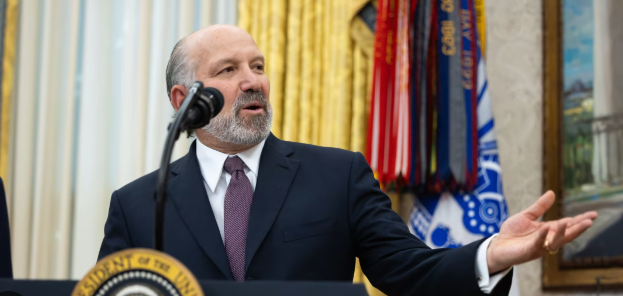The FCC’s ruling from November 22, 2023, titled “Combatting Illegal Text Messages,” marks a pivotal shift in telecommunications regulation, with profound implications for voice calling practices, especially in lead generation. While the ruling primarily targets illegal text messaging, its language and directives have significant repercussions for companies engaged in voice call lead generation and outreach. This post takes a look at how these changes may impact a variety of different actors, providing our opinion for lead generators, buyers, carriers, and Contact Center as a Service (CCaaS) vendors to navigate these changes. Let’s dig into it from our perspective…
Most impacted: Lead Generators AND Buyers
Lead Generators
For lead generators, the proposed FCC regulations present a seismic shift in operational models. The requirement to obtain explicit consent for each company to which a lead will be sold fundamentally alters the traditional lead gen space. This move away from a more generalized consent approach means lead generators must now develop mechanisms to obtain and document specific permissions, significantly complicating their processes.
This change not only increases the administrative burden but also impacts the speed and efficiency that have been the hallmark of the lead generation industry. Generating leads with such specific consent may slow down the process and limit the volume of leads that can be sold, potentially reducing the overall profitability of lead generation campaigns.
Moreover, the necessity for individual consent for each lead recipient could lead to an increase in operational costs. Lead generators might need to invest in more sophisticated CRM systems, consent management tools, and data verification technologies. These additional costs could, in turn, lead to higher prices for leads, affecting the market dynamics.
There’s also the looming risk that some lead generators may find these new requirements too onerous or costly and may exit the market or attempt to circumvent the rules. Such scenarios could lead to a decrease in the availability of quality leads, forcing lead buyers to seek alternative sources.
Lead Buyers
Lead buyers, on the other hand, are bracing for a host of new compliance challenges. Validating the consent for each lead becomes a primary concern, with third-party services like Jornaya and Trusted Form certificates providing some level of assurance but not being comprehensive solutions. Buyers must now implement additional measures to ensure that the leads they purchase are fully compliant with the new regulations.
The potential reduction in the availability of compliant leads or increased costs from lead generators could drive lead buyers to rely more heavily on their advertising efforts. This shift brings its own set of challenges: advertising markets are often saturated and expensive, and unlike buying leads, advertising offers no guarantee of returns. The increased competition and costs in advertising could significantly impact lead buyers’ marketing budgets and ROI.
Furthermore, lead buyers will likely need to qualify leads more rigorously from their advertising efforts. This demands a greater human investment in contact centers, including additional training for agents, updates to scripts, and enhancements to agent tools. Such changes not only increase operational costs but also require a strategic overhaul of how lead qualification and customer interactions are managed. these changes pose a significant risk to positive business outcomes and will require a wholesale review of the sales processes, how leads are managed, and revisiting all revenue models.
Challenges for Carriers and CCaaS Vendors
Carriers
Carriers are currently navigating a sea of regulatory changes, some proposed and others already in effect, with a conservative approach to enforcement that could set the tone for stricter compliance postures in the future making it that much harded to execute on outbound engagement for end users.
Under the shadow of these proposed rulings, carriers are already required to block calls from numbers flagged by the FCC, a mandate that has led many to adopt a caution-first philosophy. As a result, carriers are erring on the side of over-blocking to avoid the consequences of non-compliance, which sometimes leads to legitimate calls being caught in the net. This preemptive stance indicates a trend towards even more conservative enforcement as new regulations solidify.
The implementation of the STIR/SHAKEN caller ID authentication framework is another area where carriers have taken significant strides. This system is instrumental in the fight against caller ID spoofing, adding a layer of security to the telecommunications infrastructure. However, the adoption of STIR/SHAKEN is not without its challenges. Carriers must carefully calibrate their systems to differentiate between potential fraud and legitimate communications, ensuring that businesses can still connect with their customers without unwarranted disruption.
These mandates necessitate substantial operational adjustments. Carriers must invest in new technologies, upgrade existing infrastructure, and train personnel on the intricacies of the new regulations. All the while, they must maintain a delicate balance between rigorous enforcement and the protection of legitimate business communication, a balance that is critical to the health of the entire telecommunications ecosystem.
The conservative tilt in enforcement that we are currently witnessing is likely to intensify as proposed regulations come to fruition. Carriers will continue to play a critical role in shaping the landscape of telecommunications compliance, wielding considerable influence over how communication is conducted and monitored. As they adapt to these mandates, carriers will have to foster open communication with their clients to ensure that legitimate business activities are not unduly hampered by the efforts to combat fraudulent calls.
CCaaS Vendors
With these proposed changed to the TCPA and FCC guidelines on the horizon, the need for compliant practices is more critical than ever. A primary focus for CCaaS vendors is the integration of caller ID authentication technologies. The adoption of STIR/SHAKEN protocols, even before regulations are finalized, positions these vendors as champions of consumer trust and regulatory foresight. By authenticating the origin of calls, they can significantly diminish the prevalence of deceptive practices such as spoofing, which erodes consumer confidence and attracts regulatory scrutiny.
Robocall mitigation is another significant area requiring attention. Vendors are enhancing their platforms with sophisticated filtering tools that can identify and block potential robocalls. These systems must be intelligent and discerning, equipped to adapt to the nuances of any new regulations while ensuring that legitimate business communications remain unaffected.
Education and client support are also essential components of a CCaaS vendor’s role. As the regulatory landscape evolves, vendors are responsible for translating these complex legal changes into actionable insights for their clients. This means providing resources, training, and hands-on support to help businesses understand the implications of the proposed regulations and navigate them effectively.
In addition to these educational efforts, CCaaS vendors must offer strategic guidance. This includes advising on communication strategies that align with anticipated regulations, assisting in the revision of scripts and workflows, and ensuring that consent management processes are robust and defensible.
The Need for Robust KYC and Third-Party Validation
With enforcement approaches differing significantly from one carrier to the next and between various CCaaS vendors, the interoperability for users will be that much more taxing. This lack of uniformity poses a substantial challenge for stakeholders who must navigate an ever-changing tapestry of compliance standards. In such an environment, the demand for industry-wide solutions and collaboration becomes not just a matter of convenience but of necessity.
For instance, carriers, tasked with implementing the STIR/SHAKEN caller ID authentication framework, may interpret and apply the rules differently. Some might adopt a stringent approach, aggressively filtering calls and texts, while others might adopt a more measured enforcement policy. This disparity can lead to confusion among lead generators and buyers, who must ensure that their communication practices are compliant across all platforms.
CCaaS vendors face a similar challenge, as they provide the technological infrastructure for many of these communications. The variance in enforcement and compliance standards means that a one-size-fits-all solution is impractical. Instead, these vendors must develop flexible systems that can adapt to the unique compliance requirements of each carrier they interface with, adding layers of complexity to their service offerings.
The situation is further complicated by the global nature of the telecommunications industry. Multinational companies must contend not only with the FCC’s regulations but also with a multitude of international laws and guidelines, which can sometimes be in conflict or require additional layers of compliance checks. This global patchwork of regulations demands a level of agility and resourcefulness from all parties involved.
As a result, there is an increasing push for standardization and collaboration within the industry. Trade associations and regulatory bodies may need to play a more prominent role in facilitating dialogue and creating frameworks for compliance that can be universally adopted. Such collaborative efforts could lead to the development of shared databases for consent verification, unified approaches to call authentication, and standardized protocols for data sharing and privacy.
Moreover, industry stakeholders might find it beneficial to form alliances and working groups dedicated to navigating these enforcement challenges. By sharing best practices, technology, and intelligence, companies can collectively improve their compliance posture. In doing so, they not only mitigate their own regulatory risk but also contribute to the overall health and trustworthiness of the telecommunications ecosystem.
Ultimately, the path forward for uniformity and enforcement in telecommunications regulation is one of partnership and innovation. By working together to address these challenges, carriers, CCaaS vendors, lead generators, and buyers can create a more predictable and manageable regulatory environment that benefits all parties, including the consumers they serve.
Data Sharing and Marketplace Dynamics
The ruling would reshape the architecture of data sharing within the lead generation marketplace, particularly affecting the mechanisms like ping-post systems that have been the backbone of the industry. These systems, designed for real-time bidding on leads, could potentially be exploited under the new regulations if not carefully managed. The ruling demands a higher standard of consent verification, which directly impacts the real-time, often opaque nature of ping-post transactions.
Lead generators, who have traditionally relied on the efficiency and speed of ping-post systems to distribute leads, must now contend with the need for greater transparency. Each lead’s consent status must be unequivocally clear and verifiable at the moment of exchange. This requirement could slow down the rapid trading environment as each participant in the chain takes the necessary steps to ensure compliance.
For lead buyers, the complexities introduced by the ruling might necessitate a reevaluation of their reliance on ping-post systems. The risks associated with purchasing non-compliant leads in such an immediate and automated fashion could outweigh the benefits. Buyers may now prioritize vendors that offer a more detailed history and documentation of consent, potentially at the expense of the real-time market’s agility.
Furthermore, the potential for misuse of ping-post systems in a stricter regulatory environment raises concerns. Unscrupulous actors may attempt to game the system by presenting leads with dubious consent as compliant, leveraging the speed of the system to avoid detection. This presents a significant risk not only to the buyers of such leads but also to the integrity of the marketplace as a whole.
In light of these challenges, the industry may shift towards more controlled and transparent systems for lead exchange. These could include centralized clearinghouses for consent verification, blockchain-based tracking systems, or other technologies that provide an immutable record of consent and transaction history. Such innovations could help preserve the efficiency of the marketplace while ensuring compliance with regulatory requirements.
As companies grapple with these new dynamics, they must also be mindful of the broader implications. The value of leads may become more closely tied to the quality of consent verification than ever before, potentially reshaping the economics of lead generation. Companies that adapt quickly and effectively to these changes can secure a competitive advantage, turning the challenges of regulation into opportunities for growth and trust-building with consumers.
Uniformity and Enforcement Challenges
Diverse enforcement approaches by carriers and CCaaS vendors add complexity. Stakeholders must adapt to varied standards, increasing the need for industry-wide solutions and collaboration. At the intersection of technology and regulation, many industries will find themselves grappling with the challenge of non-uniform enforcement approaches by carriers and CCaaS vendors. This diversity in enforcement not only adds a layer of complexity for stakeholders but also hampers the creation of a coherent industry standard. The recent FCC proposal intensifies this challenge, as it brings forth new regulations that demand stringent adherence to compliance across various dimensions of telecommunication services.
Carriers, for their part, are central to the enforcement of these regulations. They must ensure that their networks are not conduits for non-compliant communications. However, each carrier may have different thresholds and interpretations of what constitutes compliance, leading to a patchwork of enforcement standards. This inconsistency can be problematic for businesses that rely on carriers to deliver their communications, as they must navigate through these varied standards to avoid penalties and maintain operational integrity.
CCaaS vendors, who equip businesses with the communication tools and infrastructure, also face a daunting task. They must ensure that their services are equipped to handle the nuances of compliance as required by different carriers. This situation calls for CCaaS platforms to be robust and versatile, capable of adapting to a range of regulatory demands. As these vendors often serve a global clientele, the challenge is compounded by the need to reconcile FCC regulations with international laws.
The complexity resulting from this lack of uniformity creates an operational and strategic burden for stakeholders. Lead generators and buyers, for instance, must ensure that their practices are compliant not just with the overarching FCC regulations but also with the specific implementations of these rules by their service providers. This can lead to increased costs as businesses may need to invest in compliance and legal counsel to navigate these waters safely.
The solution to these challenges lies in industry-wide collaboration and the development of standardized solutions. There is a growing need for industry forums and think tanks that can facilitate discussions between carriers, CCaaS vendors, policymakers, and businesses to develop a unified approach to enforcement. Through such collaborative efforts, the industry can aim to create a set of best practices and standards that all stakeholders can adhere to, simplifying compliance and reducing the burden on individual entities.
Additionally, technology can play a significant role in addressing these challenges. The development of industry-wide platforms that can automate compliance checks and maintain records of consent and communication practices could greatly reduce the complexity of enforcement. Such systems would not only aid in maintaining uniformity but also ensure transparency and traceability of communications, thereby enhancing trust in the industry.
As stakeholders navigate this complex landscape, there is also a need for continuous education and knowledge-sharing. Regular workshops, webinars, and training sessions can help keep all parties updated on regulatory changes and enforcement trends. By investing in such educational initiatives, the industry can foster a culture of compliance and cooperation.
What Happens From Here?
As the telecommunications and marketing sectors brace for the FCC’s vote on December 13th, the proposed ruling from November 2023 targeting illegal text messages stands at a critical juncture. The outcome will not only shape the future of text message regulation but also carry substantial implications for voice calling practices.
Stakeholders are now at a crossroads, and the actions they take from here will be pivotal. The anticipated ruling necessitates a reassessment of lead generation tactics, a re-evaluation of consent verification processes, and a commitment to staying abreast of compliance standards. For carriers and CCaaS vendors, it is an urgent call to accelerate the integration of advanced authentication frameworks like STIR/SHAKEN and to fortify their systems against illegal communications.
As the vote nears, the industry must engage in proactive dialogue, seeking clarification and collaboration to navigate the complexities of the proposed changes. The potential for a ripple effect across the communications landscape is significant, prompting a need for unified strategies that balance consumer protection with the operational realities of businesses.
The period following the vote will be a time for reflection and action. Companies will need to adapt to the ruling’s outcomes, pivoting towards methods and practices that ensure robust compliance. It’s a time for innovation in lead generation, for enhanced data privacy and protection measures, and for a concerted effort to align industry practices with regulatory expectations.
In essence, what happens from here is a concerted effort to chart a path forward that upholds the integrity of communication channels while fostering an environment of trust and compliance. The December 13th vote is not just a procedural event; it is a defining moment that will shape the operational contours of the telecommunications and marketing sectors for years to come.
Additional Resources
- Original FCC Document
- https://docs.fcc.gov/public/attachments/DOC-398661A1.pdf
- Understanding TCPA Compliance
- https://www.compliancepoint.com/articles/beginners-guide-to-the-tcpa
- More about STIR/SHAKEN
- https://transnexus.com/whitepapers/stir-and-shaken-overview/
- https://transnexus.com/blog/2023/shaken-sixth-order-adopted/



